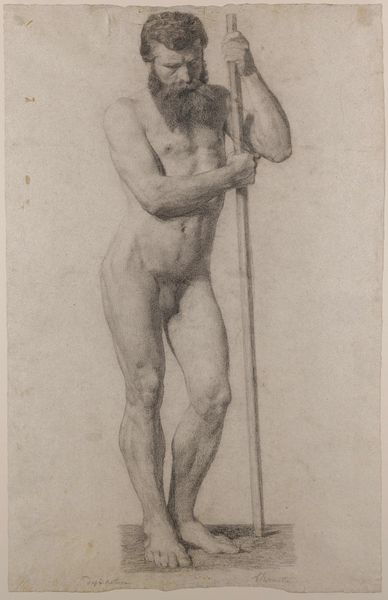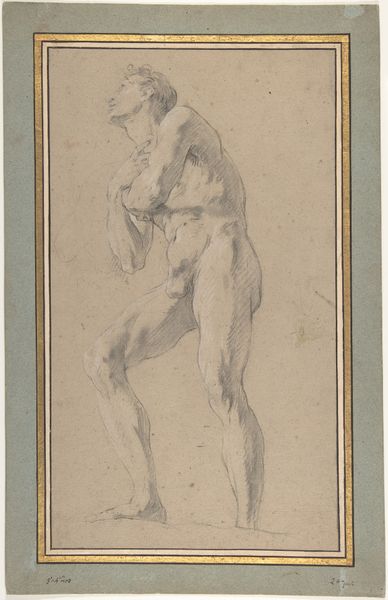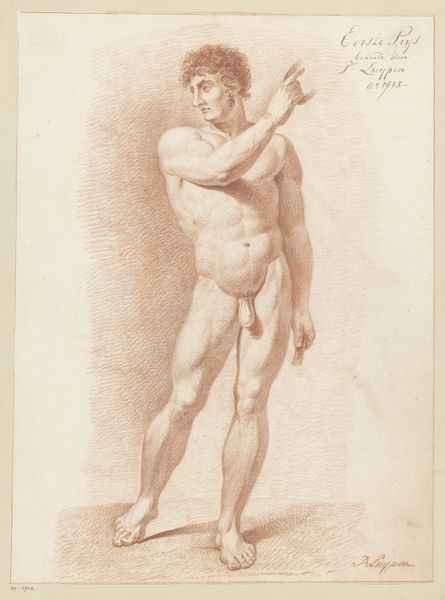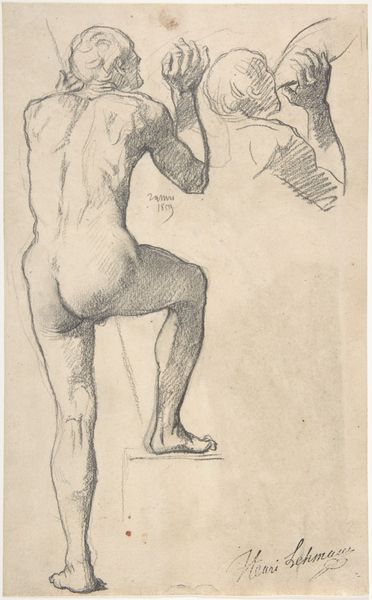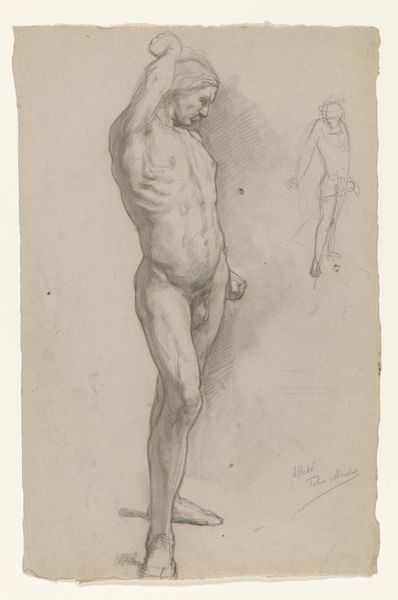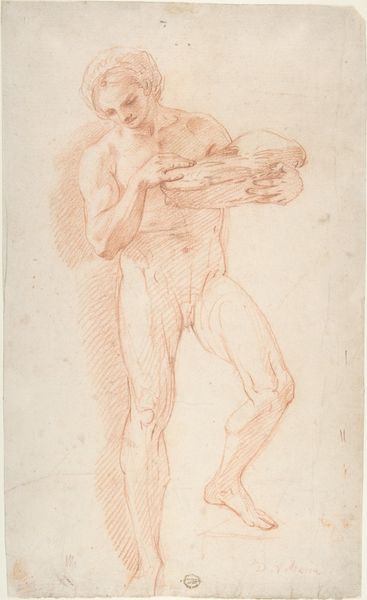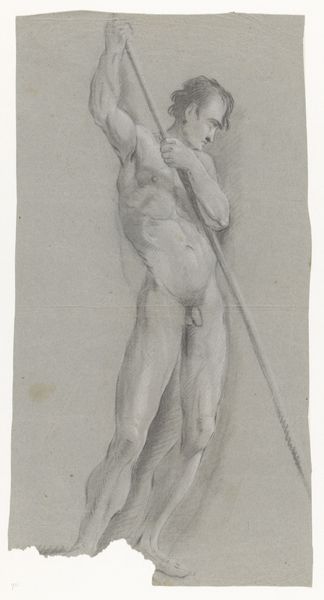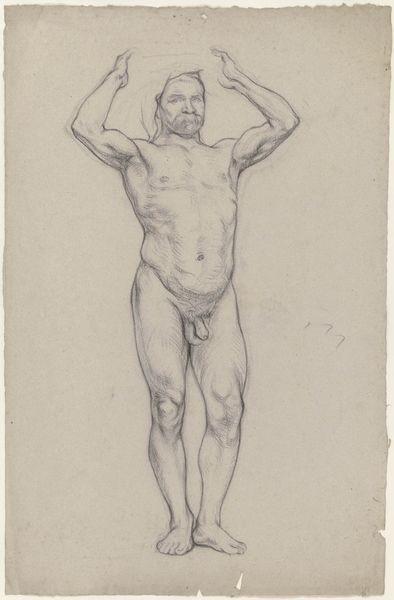
drawing, pencil, graphite
#
portrait
#
pencil drawn
#
drawing
#
pencil sketch
#
charcoal drawing
#
pencil drawing
#
pencil
#
graphite
#
portrait drawing
#
nude
#
realism
Dimensions: height 568 mm, width 404 mm
Copyright: Rijks Museum: Open Domain
Editor: This is "Standing Male Nude, with Stick, Facing Left," a pencil drawing by Jan Veth, sometime between 1874 and 1925. The figure seems both powerful and vulnerable somehow. What’s your take on this work? Curator: This piece offers an opportunity to reflect on the construction of masculinity within the art historical canon. The male nude, particularly in the academic tradition, has often been used to project ideals of strength and beauty. How does Veth's depiction conform to or challenge those ideals, especially considering the sitter's age? Editor: He doesn’t seem idealized, certainly. He’s not a young, athletic figure. Curator: Exactly. The artist presents us with a more realistic, perhaps even flawed, version of masculinity. What impact does that have? Also, what’s your read on the stick? How does that potentially shift our perception? Does it empower him, or imply fragility, even vulnerability? Editor: I guess it depends. It could be a sign of support, or something he's leaning on as he poses. Curator: And considering Veth’s historical context, how might we interpret this representation of masculinity in relation to the sociopolitical climate of the late 19th and early 20th centuries? Was Veth perhaps responding to the shifting norms and expectations around gender and power? Editor: That’s fascinating. So by not idealizing the figure, Veth could be making a statement about changing ideas of masculinity? Curator: Precisely. He may be critiquing traditional heroic depictions and exploring a more human and nuanced representation. The very act of observing and documenting a less conventional physique becomes an act of resistance against established norms. Editor: I never thought about it that way. It makes me wonder about the power dynamics inherent in the artist-model relationship as well, and what choices the artist is making about whose body is worthy of representation. Curator: Exactly! It highlights the social and political dimensions of art, inviting us to consider whose stories are being told, and how. Editor: This has completely changed how I see the drawing. I was initially responding to the subject’s mood, and I hadn't even thought about all these issues of power and representation. Curator: That's the power of art, isn't it? It provokes us to question, analyze, and reimagine the world around us.
Comments
No comments
Be the first to comment and join the conversation on the ultimate creative platform.


